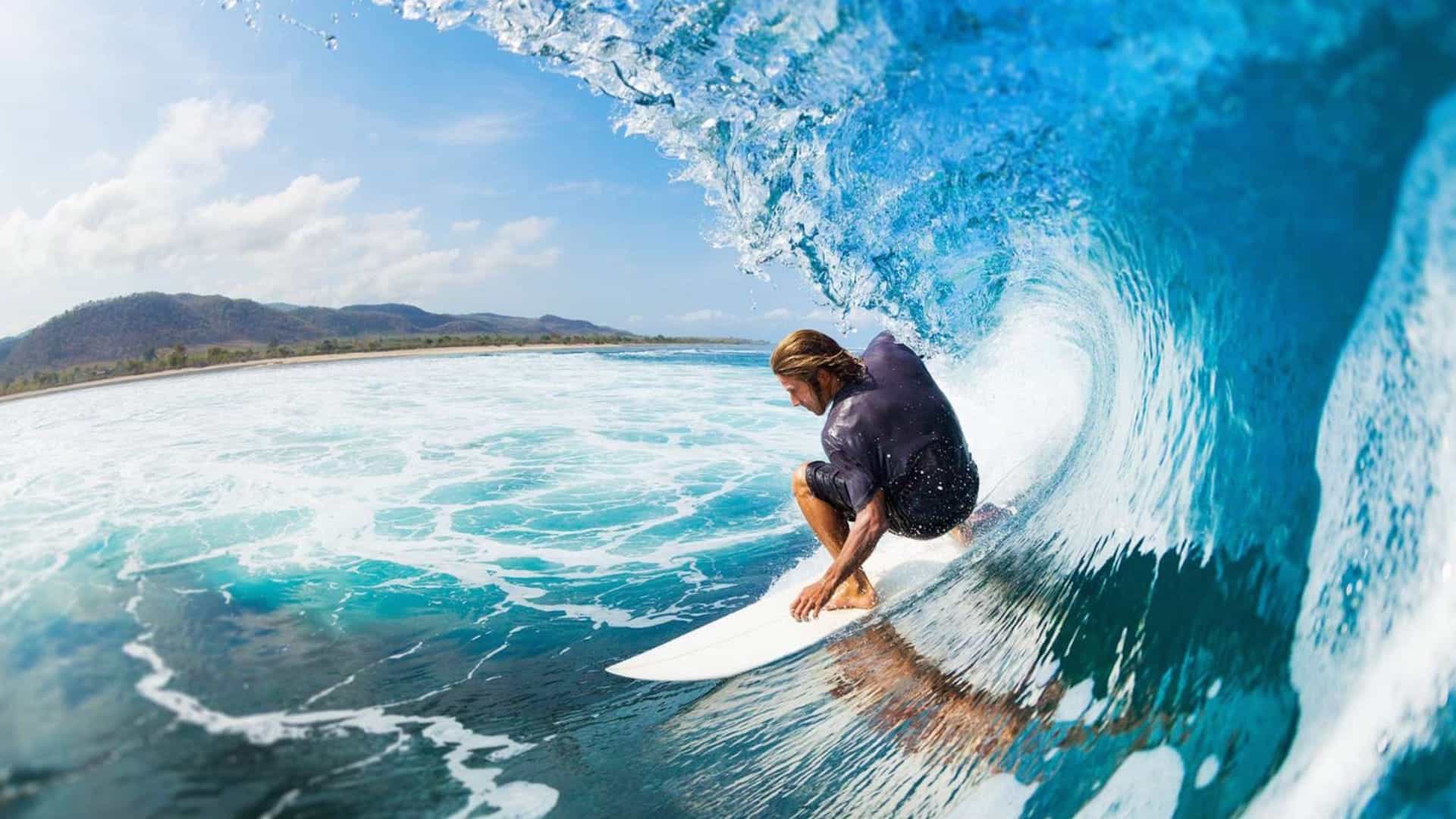There have been numerous movies on pro surfers and their search for the one perfect wave that is destined to hit a particular beach at a specific time. Well, that might be the case for a few surfers, but in reality, surfing has much less to do with the mysterious whims of nature and divine intervention. Just like every other sport, surfing is all about technique, talent and the principles of physics. The so-called perfect wave can be a result of offshore cyclones and storms. Most of the times, a storm creates powerful and turbulent water currents that combine and form waves as the currents approach the coastal areas. It is a classic example of high levels of kinetic energy partially converting to potential energy as the waves slow down, but continue to rise in height as they approach the beaches.
The science behind surfing like a pro
To master a majestic wave like this on nothing but a seemingly simple “tool” like a surfboard has a lot to do with learning the principles of buoyancy. You must have heard professional surfers and hobbyists say how the build and quality of surfboards differ from one to the other. What they are trying to say is that one helps them to stay afloat more easily by distributing their weight evenly against the pressure of the water under them. That is nothing but the most practical application of the Archimedes’ principle. The surfboard’s buoyancy helps the rider and the board to stay on the wave even when the surfer stands up and shifts his center of gravity a little.
Now, you might want to ask, “how does the surfer move forward if the board pushes him up and he pushes the board down?” We must not forget that the wave has perpetual forward motion. It is a strong hydrodynamic force which pushes the board and the rider forward, while the effects of gravity and buoyancy keep the rider upright. You can get more tips on rich information on professional surfing from kookslams.
The secret that powers all super surfers around the globe
Nature is whimsical, and that is the beauty of water sports. Sea surfing depends significantly on the quality of the weather and the waves during the day. However, several surfing events invite surfers from all around the globe to participate. The invitations go out at least 3 to 4 months in advance. Yes, modern weather prediction equipment helps the meteorologists and the organizers to get an idea of the general weather conditions that may prevail during the event, but there is no way to predict the mood of the sea. Experience shows that in case of unpredictable weather, a good surfboard can become the savior during these events.
The primary components of every surfboard and their role in keeping the surfer upright
The wave quality, wind, turbulence, and weather are surely not in the hands of the surfer, but their day’s performance can be in their control. The right board will help them ride to glory by creating the right amount of buoyancy and facilitating the necessary hydrodynamic force.
The core: Standard surfboards have a core of polyurethane foam that does not absorb water and is buoyant. Better quality surfboards have smaller cell polyurethane cores that are easy to shape, lighter in weight and are more buoyant. Of course, if you travel a lot for surfing or you do not like to lug a board around under your arm, you can try inflatable paddleboards to bypass the “core” decision problem.
I-Beam Wood: To give the board more integrity, designers include the I-Beam made from redwood, mahogany, balsa, cedar, and evergreen. Your surfboard might have an uppermost layer of resin laminate or fiberglass.
Waterproofing: The thicker fiberglass on top makes the board stronger. It can withstand the weight of the rider and stay afloat at the same time due to the perfect balance of the buoyant, strength building and waterproofing materials.
No one can entirely describe how a board works without first trying to explain the principles behind its design. The most basic aesthetic components of a surfboard can contribute to the performance on the sea. The usual surfboards can vary between 18 inches and 72 inches in width. The wider the board is, the more buoyant it will be. However, such a surfboard is also more difficult to paddle. Smaller boards often generate less drag force though they are far behind in buoyancy.
Nose and Tail: Nose and tails help to steady the board while the rider tries to catch a wave. A wider nose keeps the tip buoyant but makes it incredibly challenging to cut into waves. Smaller tails perform better but provide lesser control over the movement of the board and rider.
The tail kick, nose kick, and the fin contribute to the performance of the surfboard and the surfer.
Nose Kick and Tail Kick: Nose kick keeps the nose raised to prevent the rider from tipping. The tail kick plays a similar role in helping the board stay afloat on the wave. The slightest rise can help the rider keep the board’s nose out of the water while catching a wave.
Fin: On the other hand, the fin design puts a finishing touch on the board’s design and performance. According to Prof. Zeeshan Rana, of Cranfield University’s Centre for Computational Engineering Sciences, “You need to explore the various types of fins in the market and match your board to one that matches.” You will find surfboards with larger pins easier to ride since they stabilize the board, but have you thought how difficult it is going to be to turn the board around after you catch the wave?
Although we have been enjoying the ocean and its waves for a long time now, we have no control over them. As a result, the finest of the surfers are also dependent on the surfboard quality for their best performances.







